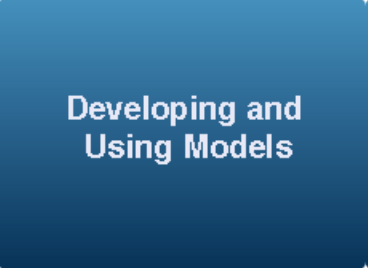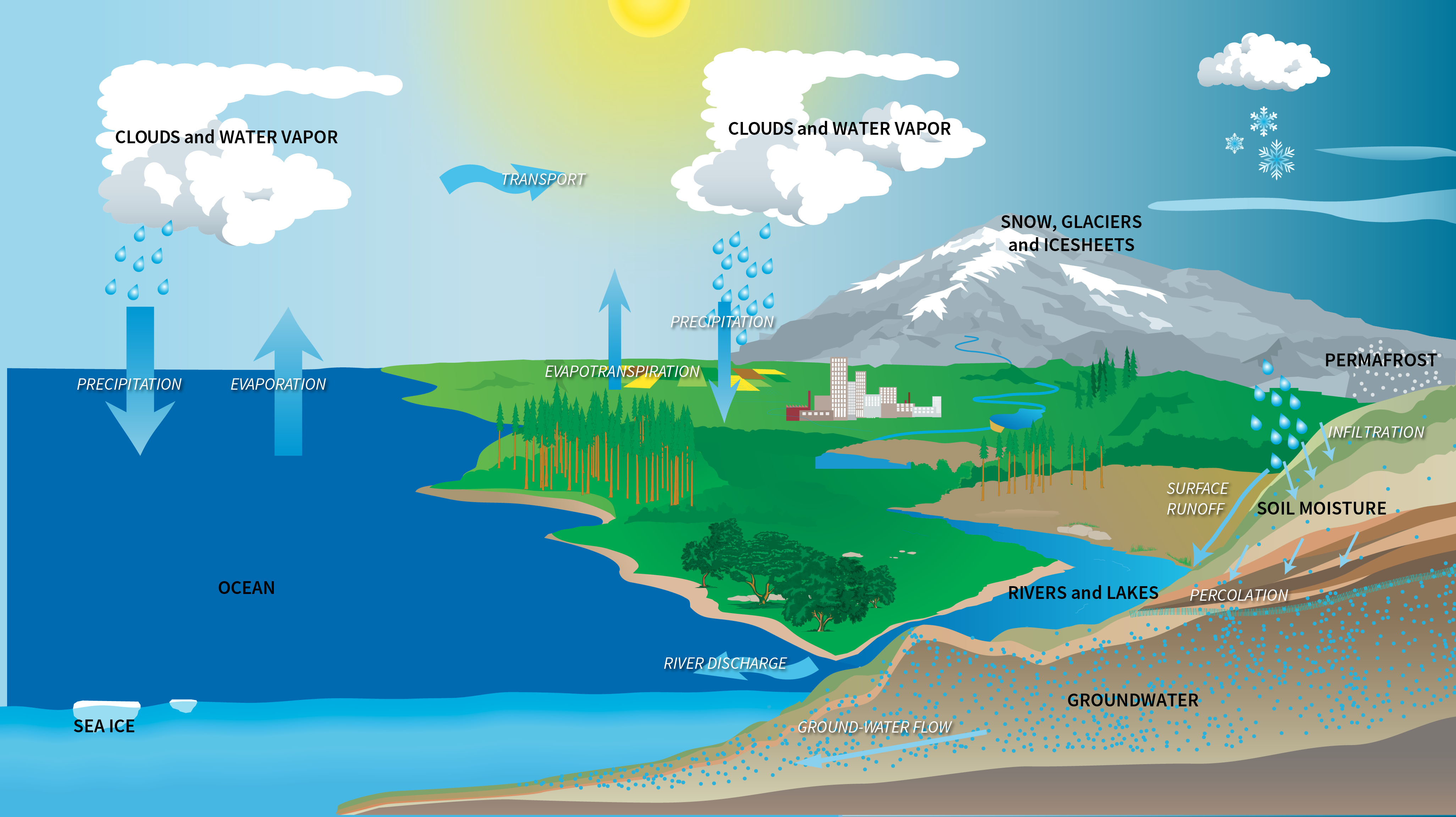Developing and Using Models with MND

Scientists and engineers use and develop models for representing ideas and explanations. Common science models include diagrams, drawings, physical replicas, mathematical representations, analogies, and computer simulations. My NASA Data provides these modeling resources such as graphical representations (maps and animations of maps over time), mathematical representations (line plots, best fit lines, etc.), etc.
Modeling can begin in the earliest grades, with students’ models progressing from concrete “pictures” and/or physical scale models (e.g., a toy car) to more abstract representations of relevant relationships in later grades, such as a diagram representing forces on a particular object in a system. (NRC Framework, 2012, p 58)
The Water Cycle

Example Questions:
- How is our water cycle diagram like what happens in nature? (What makes the water cycle diagram an effective model, i.e., how does it resemble that which it represents?)
- How is the water cycle diagram not like what happens in nature? (What makes the water cycle diagram an insufficient model, i.e., how does it differ from that which it represents?)
- How could we make it more like what really happens in nature? (How could we improve the water cycle diagram as a model?)
K-2: Modeling in K-2 builds on prior experiences and progresses to include using and developing models (i.e., diagrams, drawing, physical replica, diorama, dramatization, storyboard) that represent concrete events or design solutions.
- Use a model to represent relationships in the natural world. (K-ESS3-1)
- Develop a model to represent patterns in the natural world. (2-ESS2-2)
3-5: Modeling in 3-5 builds on K-2 experiences and progresses to building and revising simple models and using models to represent events and design solutions.
- Develop a model using an example to describe a scientific principle. (5-ESS2-1)
6-8: Modeling in 6-8 builds on K-5 experiences and progresses to developing, using, and revising models to describe, test and predict more abstract phenomena and design systems.
- Develop and use a model to describe phenomena. (MS-ESS1-1) (MS-ESS1-2)
- Develop a model to describe unobservable mechanisms. (MS-ESS2-4)
9-12: Modeling in 9-12 builds on K-8 experiences and progresses to using, synthesizing, and developing models to predict and show relationships among variables between systems and their components in the natural and designed world(s).
- Develop a model based on evidence to illustrate the relationships between systems or between components of a system. (HS-ESS1-1) (HS-ESS2-1) (HS-ESS2-3) (HS-ESS2-6)
- Use a model to provide mechanistic accounts of phenomena. (HS-ESS2-4)

